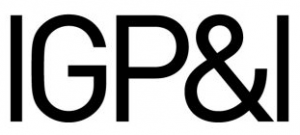Gard was founded in 1907 by shipowners who were unwilling to expose themselves, through a mutual insurance arrangement, to the perceived new risks of steam propulsion. Now the wheel is turning full circle and increasingly shipowners are looking to retrofit or buy newbuilds incorporating wind propulsion technology. But what risks might that new equipment pose, and how will marine insurers react to them?

Wind propulsion: opportunities and new risks
Written by
Published 24 May 2023
Shipowners are operating under a host of regulations and market pressures to reduce CO2 emissions. There is the IMO target of a 50% reduction in total CO2 emissions by 2050 as compared to 2008, which may be amended to net zero at the forthcoming MEPC 80. On 1 January 2023, the Carbon Intensity Indicator came into force. It will rank vessels from A-E, based on the carbon intensity of their operations. Negotiations at IMO-level to introduce a carbon-based fuel levy are progressing. From 1 January 2024, vessels calling in Europe will need to purchase carbon credits under the EU ETS scheme. More generally, there is increasing pressure from companies to reduce their Scope 3 emissions, including those from transportation.
Aside from the promise of alternative fuels in the future, there are a range of efficiency measures that can be implemented right now. These include rerating of engines, air lubrication, more frequent hull cleaning, fitting redesigned propellers and wind propulsion. It is only wind propulsion that offers an entirely new and carbon-free form of propulsion once installed on the vessel. In their Maritime Decarbonisation Strategy 2022, the Mærsk Mc-Kinney Møller Center for Zero Carbon Shipping identified wind propulsion as a key part of the decarbonisation of the global fleet, with a potential overall ‘efficiency gain’ of 1-8% per ship. Efficiency gains are from sail systems that augment ships using carbon-based fuels. Gard’s member Wallenius Wilhemsen has gone much further in its Orcelle Wind project. The project aims to develop a wind-powered car and truck carrier by 2027, with up to 90% reduced emissions on a single voyage compared to today's most efficient vessels.
Types of sail systems
There are three principal types of wind propulsion technology: the Flettner rotor, the kite sail and the vertical deck-mounted sail, of which the wing sail is probably the most well-known.
The Flettner rotor is a large cylinder mounted vertically and mechanically rotated around its axis, creating thrust through the so-called Magnus Effect. The technology was invented in the 1920s but has had limited use since then. More recently interest has revived. An example is the bulk carrier Afros (2018-built, 64,000 dwt), delivered as a newbuild with four moveable rotors fitted by Anemoi Marine Technologies. These showed a 12.5% fuel savings on a return voyage between Nantong and Vancouver. Rotors fitted by Norsepower to a variety of different ship types, have shown fuel consumption savings of 5-20%.
Kite sails involve tethering a large kite to the bow of a vessel, similar in design to those used by kiteboarders. An early prototype was the MS Onego Duesto (2007-built, 9,831 dwt), equipped with a 160m2 kite. It showed average fuel saving of 5%, increasing to 10-12% on North Atlantic and North Pacific routes. This year, testing of a 500m2 kite began on the Airbus chartered, Louis Dreyfus Armateurs operated RORO vessel Ville de Bordeaux (2004-built, 5,200 dwt) on its monthly transatlantic route.
Wing sails are solid aeroplane-like wings, mounted vertically and trimmed depending upon the wind direction. High oil prices in the early 1980s sparked interest in this technology but never adopted beyond prototypes. It is now being actively developed. One such company is BAR Technologies, a UK-based spin-out of the British Americas Cup Team run by Ben Ainslie. The company and Yara Marine Technologies are working with MC Shipping and their charterer, Cargill, and with Berge Bulk to instal wing sails on their respective bulk carriers, the Pyxis Ocean (2017-built, 80,962 dwt) and the Berge Olympus (2018-built, 210,000 dwt). BAR Technologies anticipates a daily fuel saving of approximately 1.5 mt per wing sail.
Although the equipment has a high degree of automation, alongside the physical fitting of the new equipment the master and crew will require additional training on the navigational software to optimise efficient sailing, and on the safe operation of the systems installed.
What does this new technology mean from a marine insurer’s perspective?
For H&M insurance, the installed equipment will be considered part of the vessel’s equipment. H&M and loss of hire insurers will be concerned with the loss or damage of equipment, and consequential damage to other parts of the vessel. The specialist nature of the repairs and the scarcity of spare parts will likely lead to higher value claims and longer repair periods. To mitigate against extended periods of repair, shipowners may look to take out extended loss of hire insurance, as they did with early exhaust gas cleaning systems. Likewise, shipowners may consider cyber insurance for the risks associated with the software-dependent operation of the equipment.
From a P&I perspective, the equipment may affect the risk of collision with other vessels and port infrastructure, or injury to crew during its operation.
Ordinarily, insurers rely heavily on classification societies and flag state inspection regimes to assess the risks associated with the build quality and the standard of maintenance of vessels they cover, only surveying only a sample of vessels. Mandatory class approval is only required for the fastening of wind propulsion equipment to the vessel’s hull, but the assured can request voluntary class approval for the equipment itself. There is already some general guidance, such as Bureau Veritas’s NR206 Wind Propulsion Systems notation. The more widespread deployment of Flettner rotors means there is specialist guidance; for example, Lloyd’s Register has specific Guidance Notes for Flettner Rotor Approval (2015).
But real-world experience of fitting wind propulsion equipment to large merchant vessels is still limited. Until more operational experience and claims data becomes available and class societies have developed more detailed requirements and guidelines, marine insurers will need to be more hands-on in assessing the risks. This will mean engaging with manufacturers of the equipment at the design and testing stages and assessing the training received by crews in the operation of the equipment and how to respond if problems occur.
The role of insurers in supporting the green transition
Whilst marine insurers may be cautious about embracing these new risks, the reality facing shipping is that wind offers an inexhaustible carbon-free means of propulsion. It is inevitable that shipowners will increasingly adopt this technology to reduce their carbon emissions. Gard, through P&I, H&M and other covers , will continue to support our members and clients as they navigate the green transition. Adding wind propulsion to the mix of decarbonization strategies makes sense for all.
This is an update to an article by the authors originally published by The Marine Insurer.





